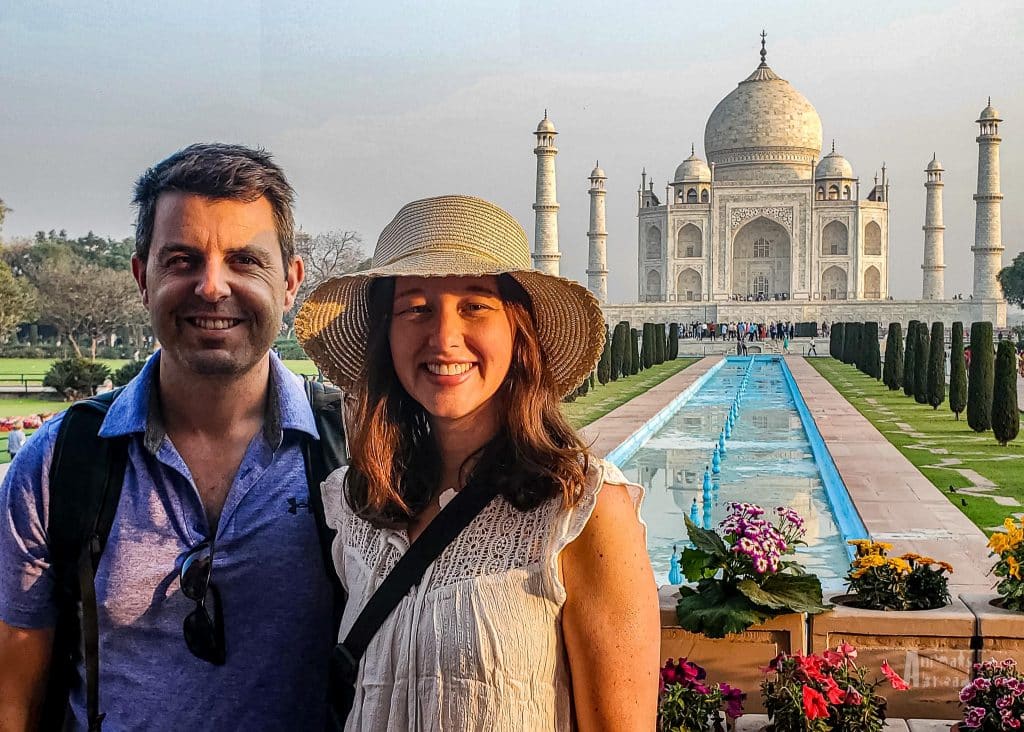Before visiting the Taj Mahal, I couldn’t help but wonder—can any place this famous really live up to the hype? But the moment we caught our first glimpse through the archway, I had my answer. The Taj Mahal doesn’t just meet expectations—it exceeds them. I could have sat and stared at it all day.
We had read about it and seen dozens of pictures and postcards, but nothing compares to standing before it in real life. The symmetry, the precision, the calm that surrounds it… It’s hard to believe something so intricate could have been made by hand.
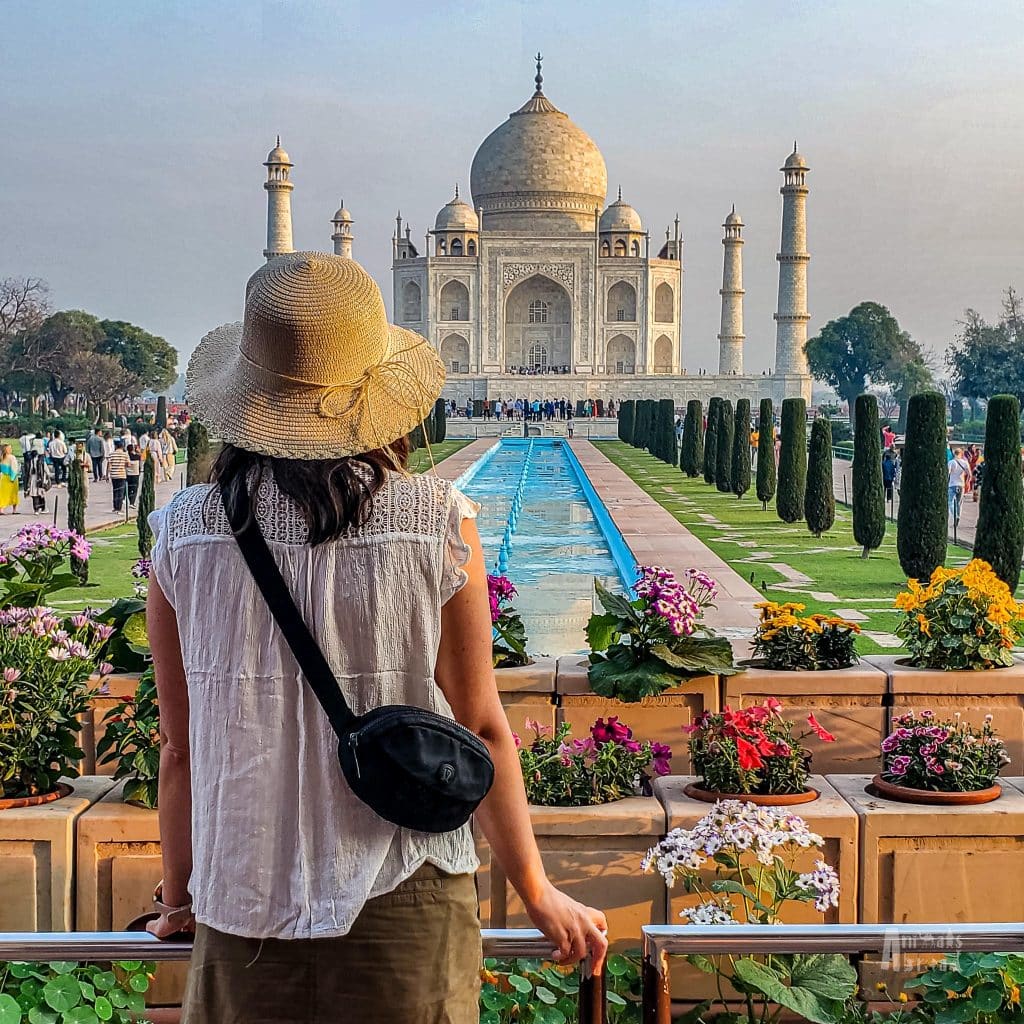
The Taj Mahal – A Love Story in Stone
The story behind the Taj Mahal is as striking as the monument itself. After two arranged marriages, Mughal emperor Shah Jahan married Mumtaz Mahal for love. She became his trusted advisor, companion, and the mother of their 14 children. Tragically, she died during the birth of their last child in 1631.
Overwhelmed by grief, Shah Jahan poured his love and sorrow into creating a tomb worthy of her memory. He commissioned what would become one of the most iconic monuments in the world. Designed by a Turkish architect, the Taj Mahal took over 20,000 artisans and 22 years to complete.
Mumtaz’s tomb lies at the centre of the marble mausoleum. Years later, when Shah Jahan died, he was buried beside her—a final act of devotion.
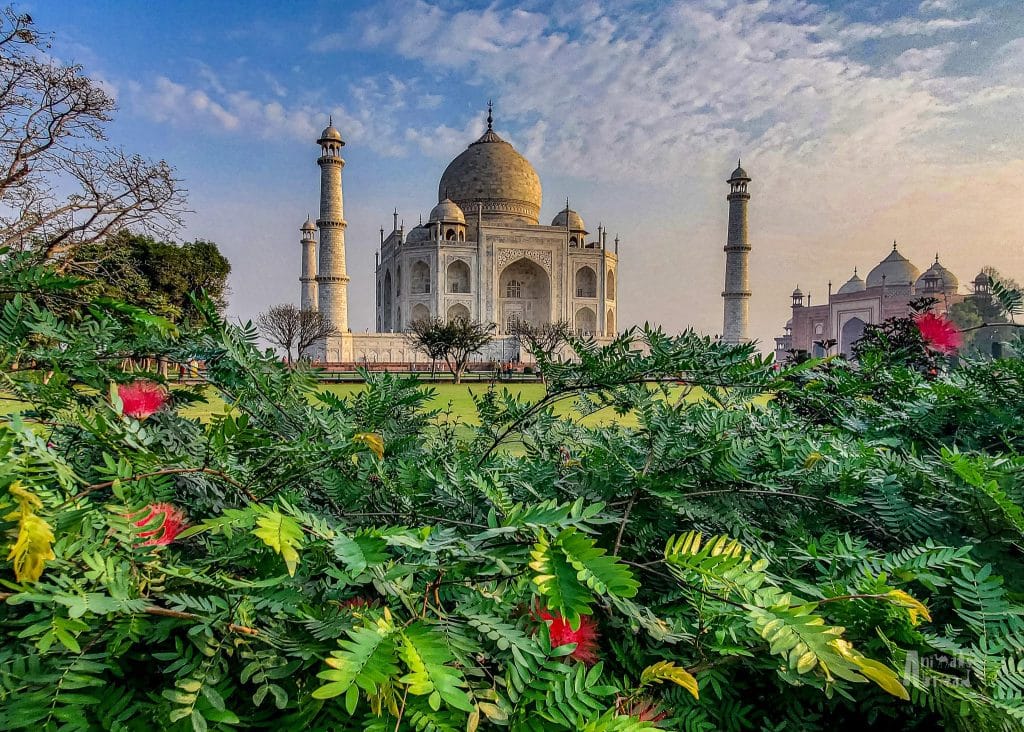
The Construction of a Wonder
It’s no surprise that the Taj Mahal is one of the New Seven Wonders of the World. Every element, from the manicured gardens to the intricate inlaid stonework, is a testament to craftsmanship and precision. But what truly blew us away was the symmetry. Every tower, archway, and decorative detail was designed to mirror its counterpart perfectly. Stand on one side and look across; the other is an exact reflection. Even the fountains and trees are arranged in balanced harmony.
The most incredible part? All of it was built by hand—no modern machines. No shortcuts. Just generations of artisans carving, cutting, and placing each stone with exacting care. It’s hard to believe something so mathematically precise was created centuries ago using only simple tools.
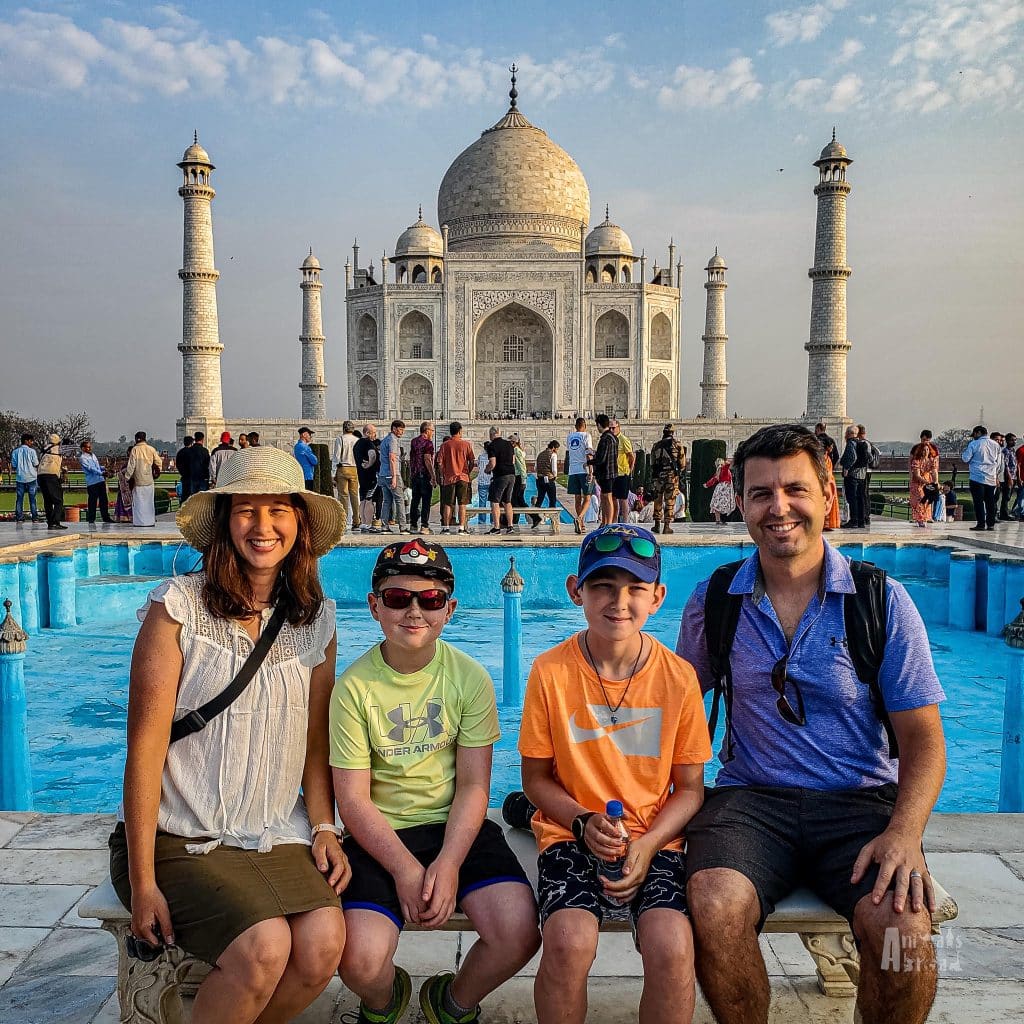
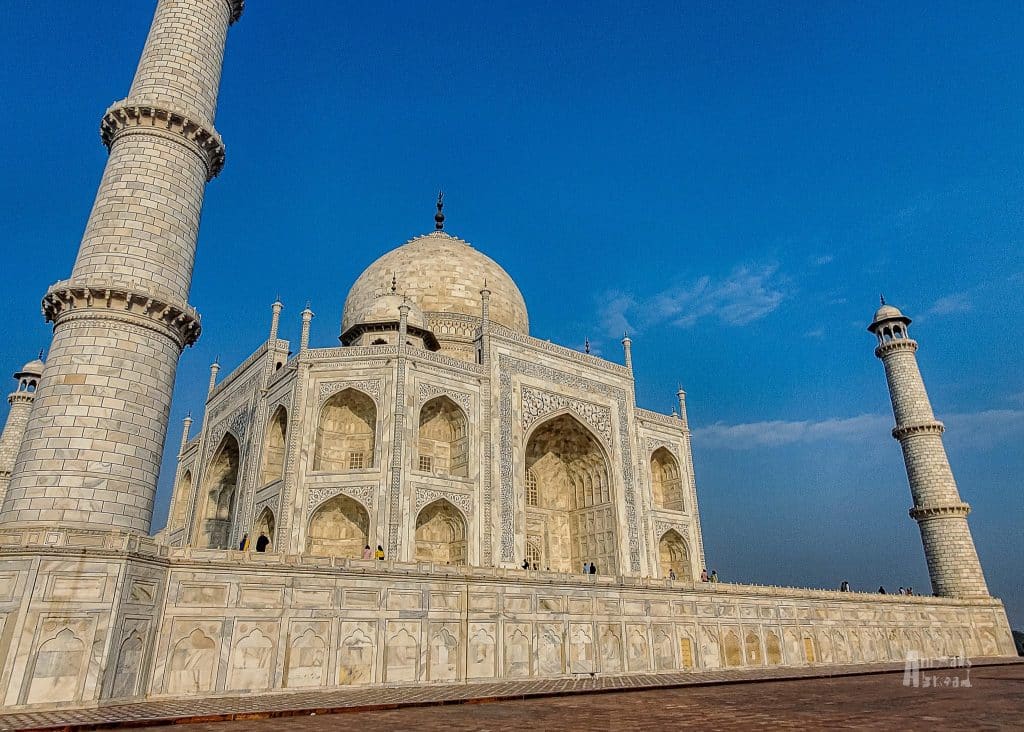
The white marble was brought from Rajasthan. Semi-precious stones were sourced from across Asia—lapis lazuli, jade, turquoise, onyx, and carnelian—and inlaid into intricate floral patterns using a technique called pietra dura.
Our guide pointed out a lotus flower carved into the wall, made of 68 individual petals. Each petal was chiselled into shape and then filled with 68 hand-cut stones. He told us it would take 3–4 days to make just one flower, and there are thousands.
One of the stones used glows red under moonlight. Our guide used a flashlight to simulate what the flowers would look like on a full moon night. The glowing stone was just one of many details that made the Taj Mahal feel truly magical.
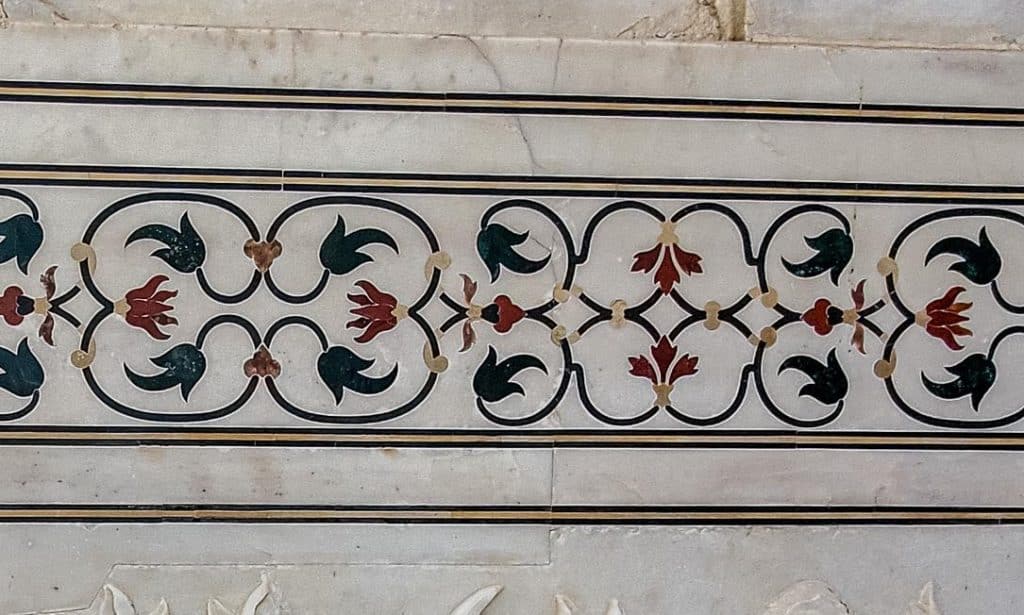
Inside the Mausoleum
Stepping inside the Taj Mahal is a solemn experience. The echo of footsteps, the dim light, the silence—it all feels sacred. Inside the central chamber lie the marble memorials of Mumtaz and Shah Jahan (the actual graves are in a crypt below, not open to the public). Photographs aren’t allowed inside, which adds to the reverence.
Tips for Visiting the Taj Mahal
Tickets & what’s included: We paid 1300 rupees per adult (at the kiosk). Kids under 15 are free. The ticket includes water, shoe covers, and access to the mausoleum. Tripods and large bags aren’t allowed inside.
Hire a guide: We generally like to explore on our own, but the tickets included a guide, and we are glad it did. Having a guide enhanced our visit, not only for the historical context and little-known facts, but also for knowing the best photo spots. Ours even got us to pose for some fun, goofy pictures, making the day even more memorable.
Don’t fall for fake guides: Stick with official guides (available with your ticket or from a trusted source). Many locals hover around the entrance offering their services, but they’re not licensed.
Visit early or late: The Taj Mahal gets crowded fast. Aim to visit early in the morning or later in the evening when the light is softer and the crowds are thinner.
Be respectful: The Taj Mahal complex includes a functioning mosque. Because of this, it is closed to tourists on Fridays so local Muslims may pray there. Dress modestly.
Take your time: Don’t rush. Sit for a while and watch how the light moves across the marble. The beauty is in the balance—everything is perfectly symmetrical, and it’s easy to miss the finer details unless you slow down.
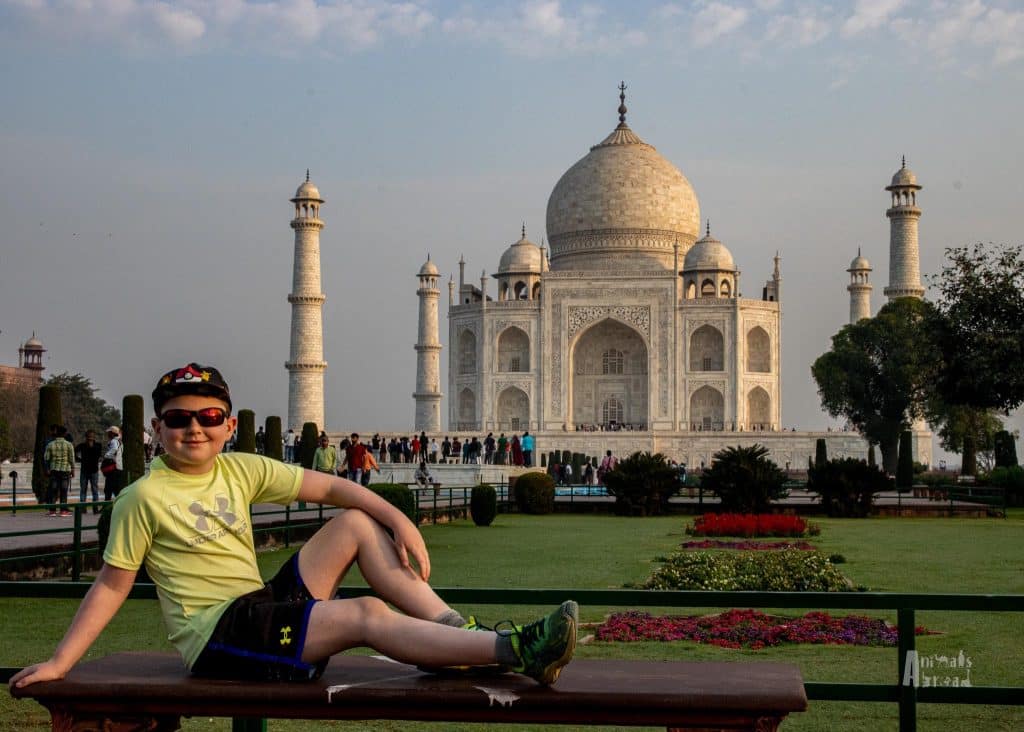
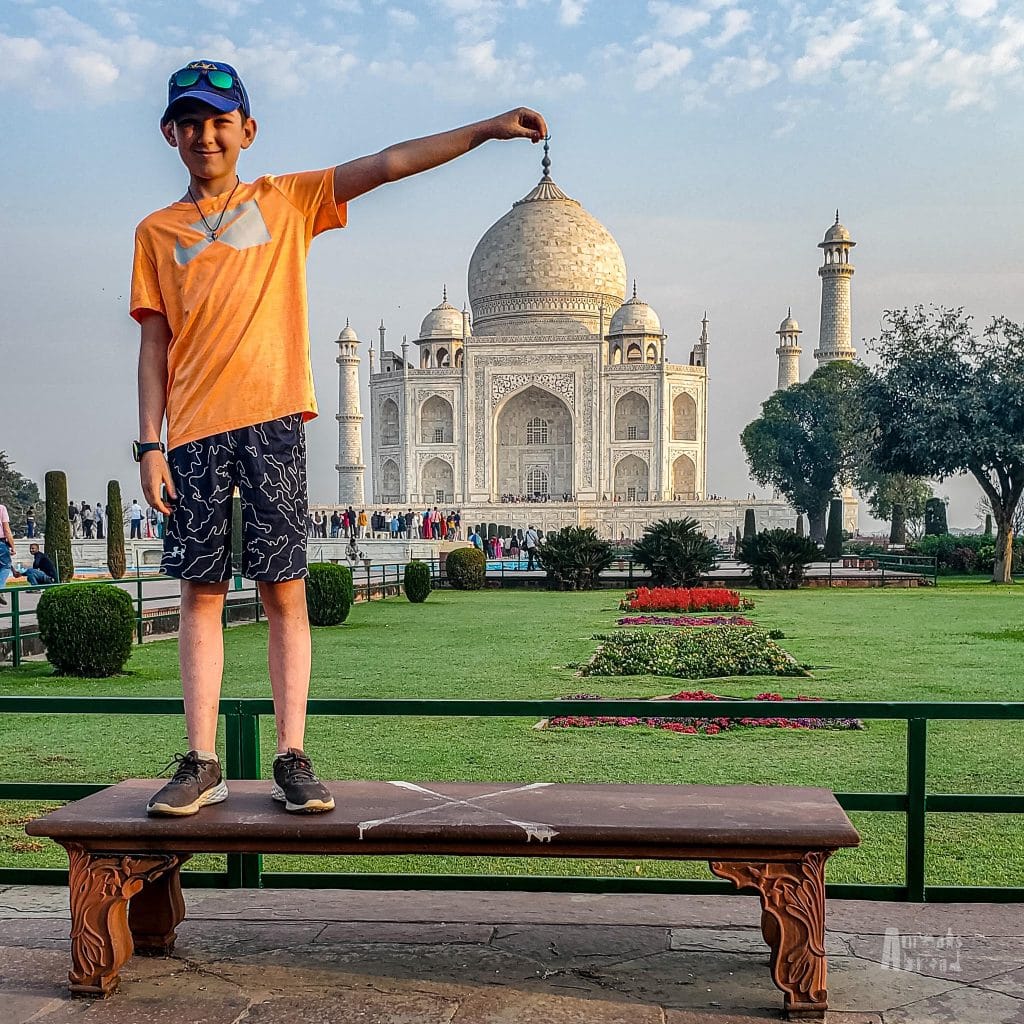
Agra Fort – Don’t Miss It
Only a short drive from the Taj Mahal is Agra Fort, which looks more like a palace than a fortress. Once the primary residence of the Mughal emperors, it’s beautifully maintained and full of surprises—ornate halls, quiet courtyards, and expansive views.
You can spot the Taj Mahal across the river from one of the balconies. It’s believed that Shah Jahan spent the final years of his life imprisoned here by his son, gazing across at his wife’s tomb from afar.
We spent about two hours wandering through the fort. If you’re already in Agra, it’s worth a visit.
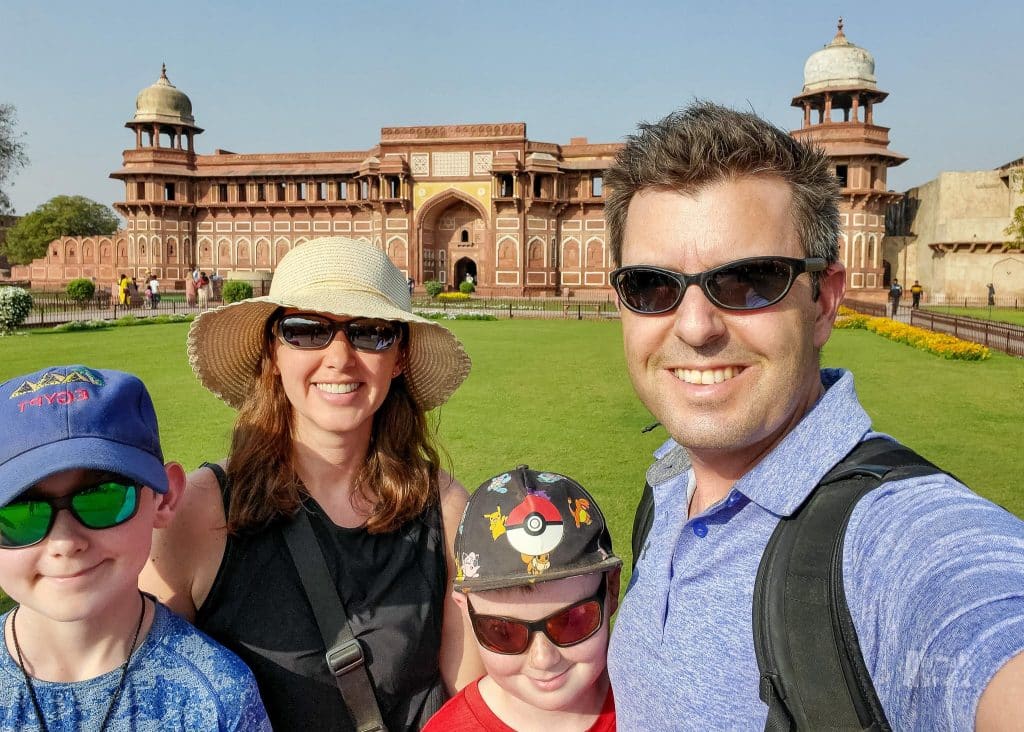
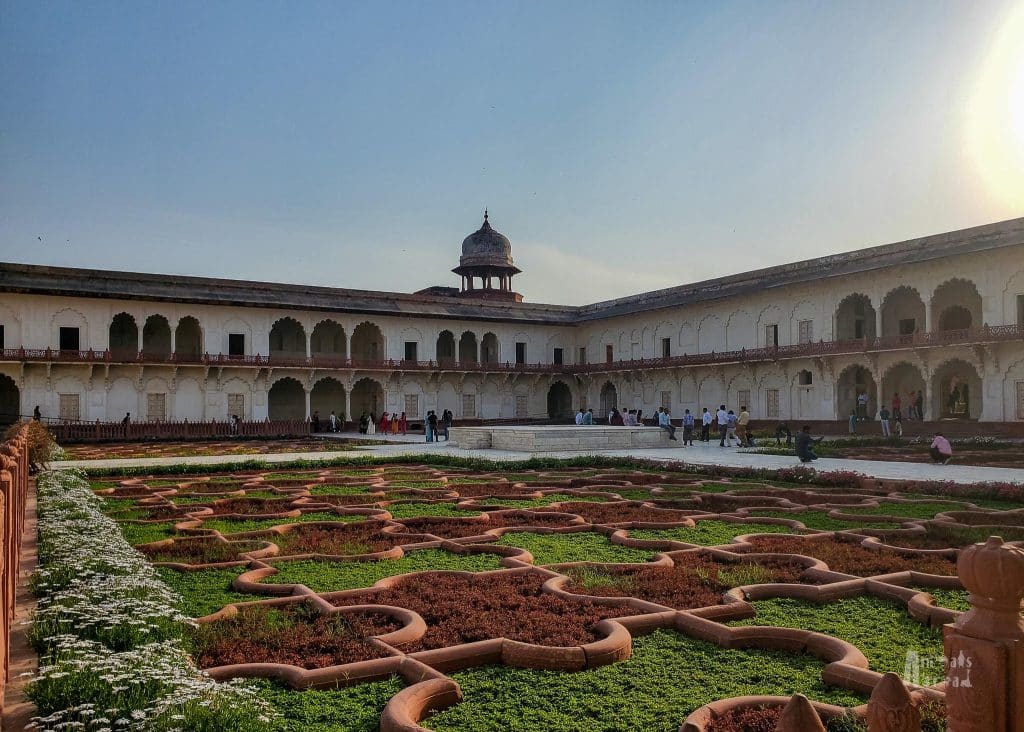
Sunset at the Taj Viewpoint
After visiting the fort, we visited a lesser-known gem: the Taj Mahal Viewpoint, located on the Yamuna River behind the monument. Here, you can see the back of the Taj Mahal—something you don’t get from the main complex.
We arrived at sunset, and the light was perfect for photos. The soft purple sky behind the white marble dome was magic. This spot isn’t on every tourist’s radar but should be.
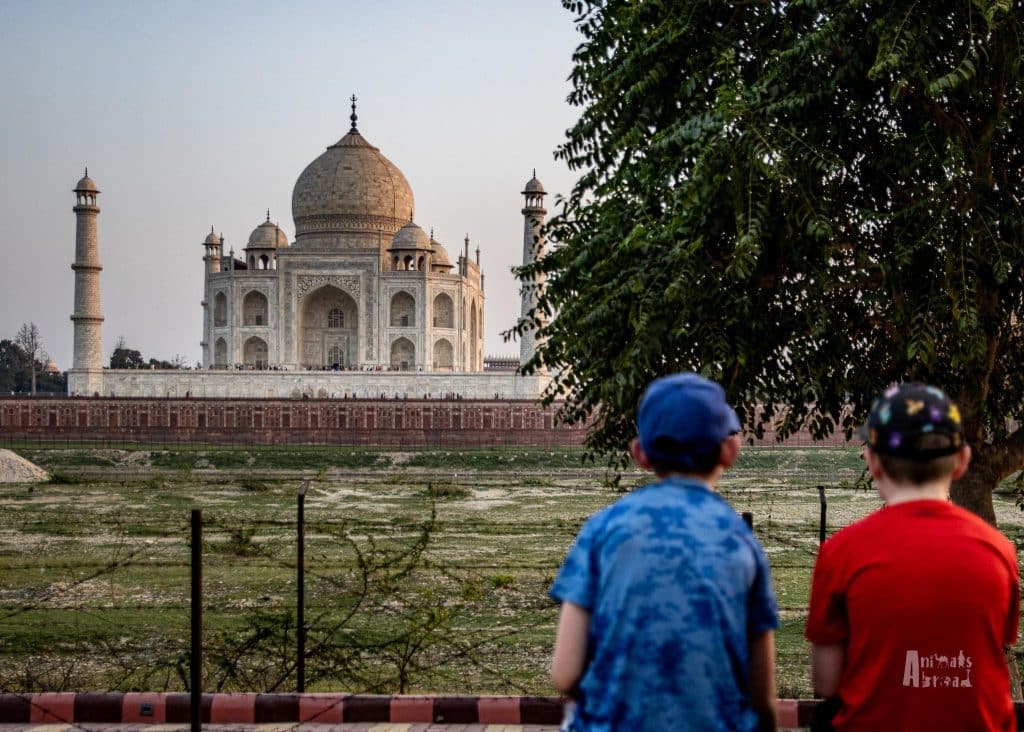
Where to Eat in Agra
Just steps from the Taj Mahal is a cozy restaurant called Joney’s Place. It has only six tables and a kitchen the size of a closet, but the flavours are incredible.
We ordered two of their specialties: Malai Kofta (fried potato and cheese dumplings in creamy sauce) and Paneer Pasanda (cheese in a rich red curry). Both were delicious, but the surprise favourite? Apple fritters and their chai tea—the best chai we’ve ever had.
On the Road: Stop at Chand Baori
If you’re heading to Jaipur by car, stop at Chand Baori, one of India’s oldest and deepest stepwells. Built over a thousand years ago, it descends 100 feet into the ground with more than 3,500 symmetrical steps.
These wells weren’t just for drawing water—they were places of gathering and refuge during the scorching Indian summers. The temperature at the bottom is often 5–6°C cooler than the surface.
It’s a quiet place, often overlooked by big tour groups, but it gives a unique glimpse into ancient Indian engineering.
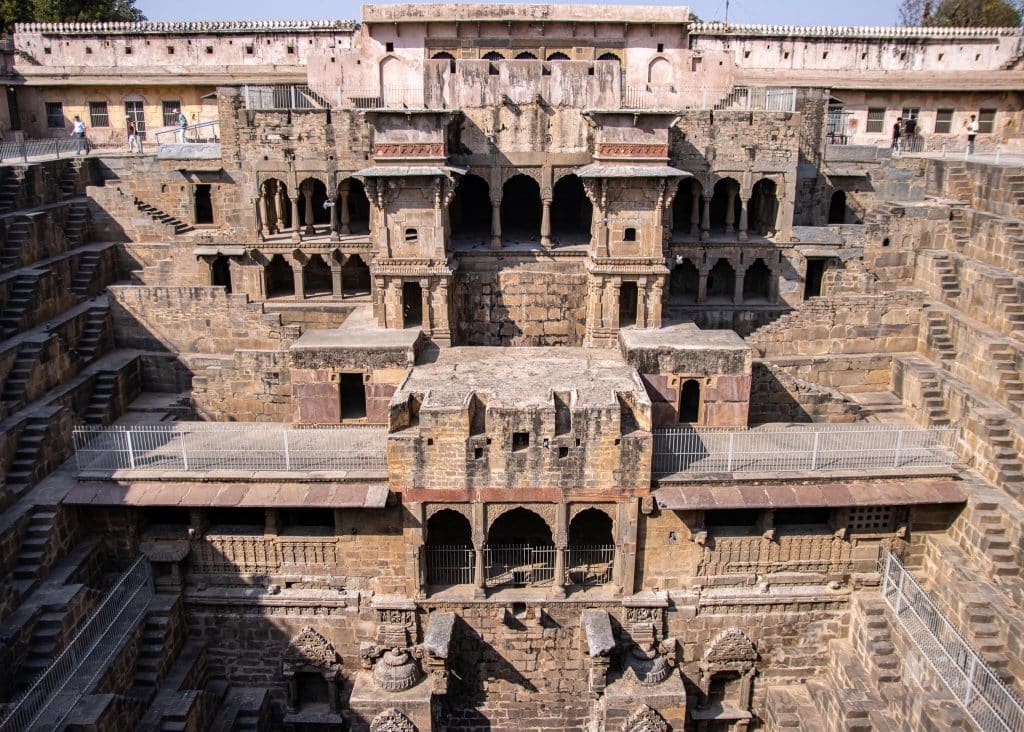
A Wonderous Site
The Taj Mahal exceeded every expectation. It’s one of those places where pictures never do it justice. Yes, it’s iconic. Yes, it’s busy. But somehow, when you’re there, it still feels peaceful.
From the hand-carved marble to the timeless love story behind its creation, the Taj Mahal is more than a monument. It’s a memory we’ll carry with us long after the trip.
